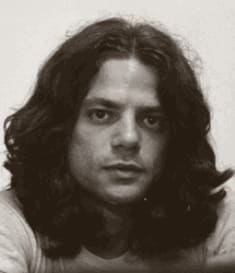“As a critic his enthusiasms were passionate, his dislikes were categorical. He wrote as he would later cut granite, with high style, great clarity of form and a very sharp edge.”
-Elizabeth C. Baker, Art in America
Career
Throughout the 1970s, Burton was known mostly as an art critic and performance artist. In 1972, he showed his Group Behavior Tableaux performance at the Whitney Museum of American Art, and went on to stage other tableaux performances at such venues as the Guggenheim, Documenta, and the Berkeley Art Museum. He began incorporating furniture into his work as early as 1970, and it would grow from being an active participant in his performances to his main area of output. He first realized his sculptures in 1975, culminating in his exhibition at Artists Space in New York, where he showed his Bronze Chair. Through the remaining 1970s, Burton would continue to create performance art pieces and, increasingly, sculpture and public art. It was public art that caught his imagination, and starting in 1979 he began to reconsider his role as an artist by making works of functional furniture-as-sculpture (pragmatic sculpture, he called it) that were meant to be largely anonymous, invisible, and woven into the fabric of the everyday.
In the 1980s, he became known primarily as a sculptor of refined sculptural furniture and ambitious and useful interventions in public space. His "tables" and "chairs" challenge the distinction between furniture and sculpture. Two-Part Chairs, Right Angle Version (a Pair), (1983-87), represents this concept aptly. The interlocking granite chairs can found at the Western Washington University Public Sculpture Collection. One version, Two-Part Chair (1986) embeds hidden queer experiences, while also serving as a functional chair. Its two interlocking granite pieces represent two highly abstracted figures, posed in a sexual position. The two parts of the chair are mutually supportive, neither part can stand without the other.
